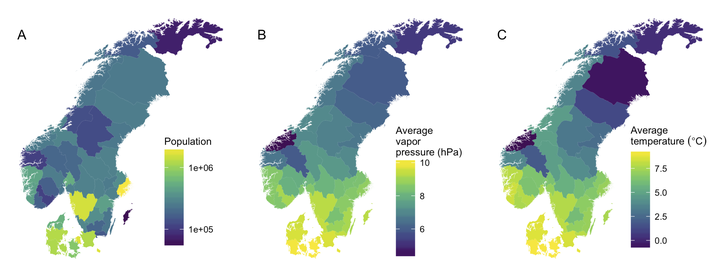Analysis of multi-level spatial data reveals strong synchrony in seasonal influenza epidemics across Norway, Sweden, and Denmark

Abstract
Population structure, spatial diffusion, and climatic conditions mediate the spatiotemporal spread of seasonal influenza in temperate regions. However, much of our knowledge of these dynamics stems from a few well-studied countries, such as the United States (US), and the extent to which this applies in different demographic and climatic environments is not fully understood. Using novel data from Norway, Sweden, and Denmark, we applied wavelet analysis and non-parametric spatial statistics to explore the spatiotemporal dynamics of influenza transmission at regional and international scales. We found the timing and amplitude of epidemics were highly synchronized both within and between countries, despite the geographical isolation of many areas in our study. Within Norway, this synchrony was most strongly modulated by population size, confirming previous findings that hierarchical spread between larger populations underlies seasonal influenza dynamics at regional levels. However, we found no such association when comparing across countries, suggesting that other factors become important at the international scale. Finally, to frame our results within a wider global context, we compared our findings from Norway to those from the US. After correcting for differences in geographic scale, we unexpectedly found higher levels of synchrony in Norway, despite its smaller population size. We hypothesize that this greater synchrony may be driven by more favorable and spatially uniform climatic conditions, although there are other likely factors we were unable to consider (such as reduced variation in school term times and differences in population movements). Overall, our results highlight the importance of comparing influenza spread at different spatial scales and across diverse geographic regions in order to better understand the complex mechanisms underlying disease dynamics.